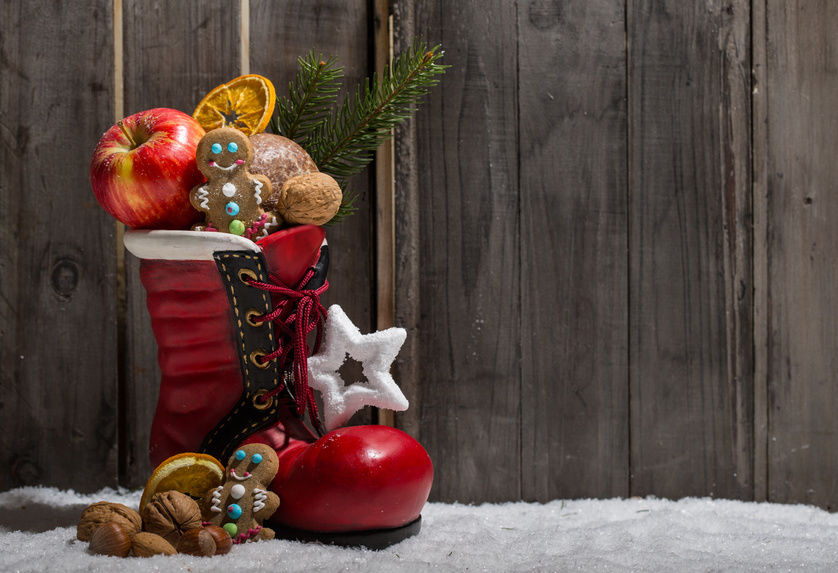What is this holiday – Nikolaustag, what traditions are associated with it? Who is Nikolaus? Why are German children so waiting for him and why do they receive gifts from him? Or maybe you already know everything and are also looking forward to December 6?

On the evening of December 5, children in Germany, Austria and Switzerland put their polished shoes outside the threshold or window so that Nikolaus can put toys or sweets there at night. On the December 6 they have Nikolaustag (Nikolaustag). Who is Nikolaus?
Under the name Nikolaus is hidden Saint Nicholas of Myra, who was in the first half of the 3rd century a bishop in the city of Myra in Asia Minor (now Demra, Turkey).
Saint Nicholas is one of the most revered saints of Christianity. He became famous for his intercession for the persecuted and suffering, as well as for his courage and generosity. Also, Saint Nicholas is considered the patron saint of sailors, merchants, clergymen and children.
December 6 marks the day of his repose according to the Gregorian calendar. According to the Julian calendar, the feast of St. Nicholas (Day of St. Nicholas the Wonderworker) is celebrated on December 19. On this day, during the Nativity Lent, Orthodox Christians are allowed to relax: you can eat fish.
Why Nikolaus Brings Gifts
Many legends are associated with St. Nicholas. He was a rich man and took care of the poor people of that time. And he did it secretly so that he would not be thanked. There is a legend that once, wishing to help a very poor family, Nikolai climbed onto the roof at night and from there threw five bundles of gold coins into the parlor; the bundles fell into the children’s shoes at the window.
According to another legend, for three nights Nicholas secretly threw through the window into the room where the daughters of one poor man spent the night, a piece of gold – for a dowry for each sister. Now they could get married and they didn’t have to go to work. Most likely, this is where the tradition of giving gifts originated.
In Germany, as well as in Switzerland and Austria, on the evening of December 5, children put their shoes outside the doorstep, so that Nikolaus, who came at night, would leave them sweets and small gifts. Some believe that Nikolaus goes around every house in his sleigh and comes through the fireplace to hide the gifts he brought in shoes or socks hanged by children.
According to another custom, Nikolaus comes to the children’s house and asks them if they behaved well, and gives gifts only to honest and obedient children. Nikolaus is often accompanied by a servant Ruprecht (Knecht Ruprecht) – a terrible guy who punishes naughty children with rods or even, puts them in a bag and takes them to the forest. Apparently, Knecht Ruprecht was invented with an educational purpose – he first appeared in the traditions of the 17th century, and since then has invariably been present in German folklore. It’s good that this is a fictional character! In Switzerland, Nikolaus for this purpose usually accompanies Shmuttsli (Schmutzli) , and in Austria and Bavaria – Krampus (Krampus).
Nikolaus is not Weinachtsman!
Despite his venerable age, Nikolaus keeps up with the times. He has his own website: bischof-nikolaus.de , where he talks about himself.
Nikolaus especially emphasizes the fact that he does not punish children, and urges them not to believe those who say otherwise. And Nikolaus offended that many confuse him with Weihnachtsmann(literally “Father Christmas”) . Everyone is familiar with the image of Weinachtsman. He looks like Santa Claus, as popularized by the Coca-Cola Company in its traditional Christmas and New Year advertisements: a cheerful little man in a red sheepskin coat, a cap and black leather boots.
As Nikolaus writes: “Of course, I can put on a lot, I also have a red jacket with a black belt, but still I am Nikolaus, not Weinachtsman!”
The “correct” Nikolaus is dressed in the vestments of a bishop: in a robe, with a pectoral cross, with a miter on his head and with a bishop’s staff in his hand.
But, indeed, it is Saint Nicholas who is the prototype of Santa Claus. European settlers brought the legends of Nikolaus with them to America. In 1862, a picture of Santa Claus was drawn by the German-born cartoonist Thomas Nast for Harper’s Weekly. He received his recognizable red and white outfit in the 20s of the twentieth century. In 1931, this image formed the basis of the advertising campaign for Coca-Cola. It turned out to be so successful that not only this modern image was entrenched in the public consciousness, but such an appearance of Santa Claus became the personification of the Coca-Cola company.

But back to Nikolaus! On holiday days, many bakeries offer special baked goods – Nikolausgebäck. It represents figures of little men baked from yeast dough. Depending on the region, these little people can be called differently: Stutenkerle, Weckmänner, Grittibänze, Grättimänner, Manala… Of course, you can imagine a bishop in these figurines only with a fair amount of imagination, but how happy children are with this baking!
To all readers: Einen frohen Nikolaustag!
Do you want to get your German language learning planner?
Dive into a World of German Mastery with Leo. Over 7500 enthusiasts are already unlocking the secrets to fluency with our tailored strategies, tips, and now, the German language learning planner. Secure yours today and transform your language journey with me!






